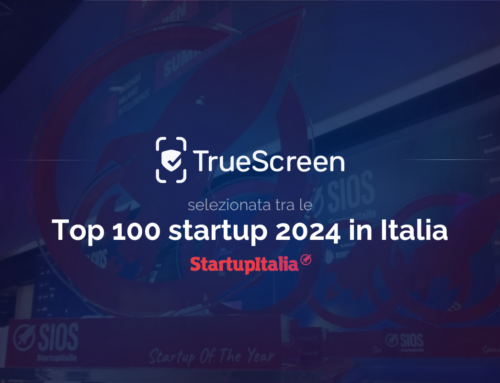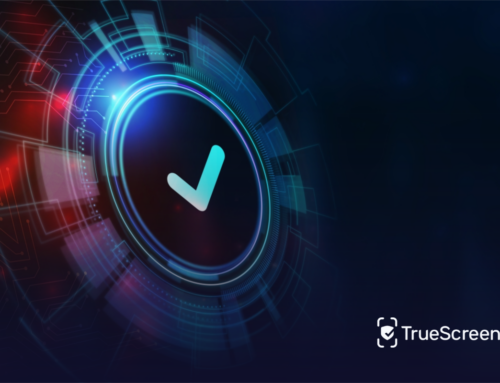In the digital age, images and videos are the most powerful vehicles for delivering and transmitting value, meaning and identity in moments and on a global scale.
In this context, the digital presence of businesses, influencers, celebrities, continues to multiply and be monetized, consequently arousing, even among “ordinary” people, the desire to find their own space online .
However, the enormous value placed on visual authenticity in the digitized economy exposes everyone to a high risk of image abuse due to the spread of so-called “synthetic media,” literally “synthetic media,” also known as AI-generated media or, more commonly, as deepfake.
L'era della fiducia zero: la mancanza di fiducia nel mondo digitalizzato
The digital world is moving ever faster toward a zero-trust paradigm in which synthetic media, such as Zelensky’s famous deepfake shown in the clip below, are increasingly present and, unfortunately, increasingly difficult to distinguish from authentic content.
Meanwhile, in addition to the New text-to-image AI platforms such as DALL-E 2 (with which anyone can create photorealistic images in a matter of minutes by typing short descriptions of what they want to represent), also catch on Google’s text-to-video generators, Imagen Video and Phenaki, and the upcoming “Make-A-Video” by Meta, demonstrating how both text-to-image and text-to-video summaries are set to become ubiquitous online. So there are questions about the adequate preparedness for these new challenges, both of the private sector and the global digital economy.
It is also noteworthy that the latter actually created an overly permissive environment in which anyone can alter videos and images to deceive for personal gain. Until online platforms take steps to distinguish “synthetic media” from authentic media, users and brands will have to protect themselves by pursuing new technologies and strategies that restore trust in the digital world.
Inoltre, le attuali pratiche di moderazione dei contenuti sui social media, dove le immagini e i video hanno un valore enorme, non controllano l'autenticità relativa. Ad oggi, le piattaforme utilizzano algoritmi e rilevamenti manuali per segnalare e rimuovere il linguaggio volgare e le immagini ritenute offensive, ma non si assumono la responsabilità di verificare se i contenuti siano autentici o sintetici.
Contenere i rischi dei media sintetici con un'app
La crescente volatilità e falsità delle informazioni reperite online ci impone quindi di avere a disposizione strumenti utili per una cristallizzazione istantanea in grado di comprovare l'autenticità e l'origine dei contenuti.
Making this practice accessible to all is the mission of the company TrueScreen, which provides tools that guarantee not only authenticity but also unchangeability of media files through real-time certification with legal value .
The TrueScreen app combines the best technologies and practices in cybersecurity and puts them in the hands of even those without expertise in the field by enabling real-time certification of any content captured with a mobile device (photos, videos, screenshots, audio, chats, documents).
This innovative acquisition method makes it possible to obtain, collect, and store authentic and unchangeable content in a simple and intuitive way with an app available on iOS and Android systems: each user thus has the ability to collect certified digital evidence and share it quickly.
In effetti, questi file sono spesso utili in diversi ambiti per comprovare fatti o eventi, anche in tribunale. Pertanto, TrueScreen li rende prove indiscutibili con un valore probatorio estremo, applicando un sigillo digitale e una marca temporale.
Informazioni su TrueScreen
TrueScreen è l'azienda leader nella cybersecurity, specializzata nell'acquisizione, nella firma e nella gestione di dati con valore legale e probatorio.
La missione di TrueScreen è ripristinare la fiducia nelle informazioni digitali fornendo tecnologie proprietarie per combattere frodi, controversie e disinformazione.
Attraverso l'acquisizione forense e legalmente valida di contenuti multimediali, la firma di documenti e la certificazione di dati e comunicazioni online, TrueScreen offre ad aziende, professionisti e privati una gestione sicura ed efficiente dei flussi di informazioni.
TrueScreen è utilizzato da multinazionali, integratori di sistemi, società di consulenza e pubbliche amministrazioni per garantire informazioni autentiche e a prova di manomissione, migliorare l'efficienza dei processi (riducendo i tempi e i costi di implementazione) e assicurare la piena conformità alle normative internazionali in materia di acquisizione ed elaborazione dei dati.
La tecnologia proprietaria di TrueScreen è disponibile come soluzione SaaS (Software-as-a-Service) attraverso applicazioni mobili, servizi web o API/SDK facilmente integrabili per software di terze parti.
Per saperne di più su TrueScreen www.truescreen.io.





